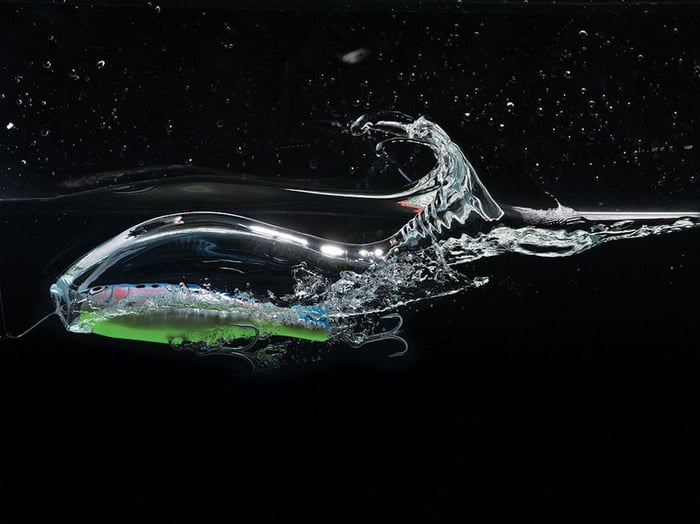Perhaps the most exciting way to catch fish when fishing with lures is using a popper. Poppers come in many sizes and shapes. They are usually made of hard plastic or wood. What they all have in common is a flat or blunt front that is designed to make noise and throw water when retrieved along the surface. Utilising this attribute is essential for them to be successful.
Usually poppers are fished with a moderately fast retrieve, with rod tip held high. This will keep a popper moving along the surface at a variable rate, which is essential for it to be effective. The standard retrieve involves using a snapping motion with the rod while retrieving at a steady pace. Always keeping a tight line to the lure is very important, otherwise a fish my hit when slack is in the line and not be hooked. The more splashing and surface commotion from the lure, the better.
Sometimes an aggressive “pop-and-stop” with a few seconds between pops can be very effective, especially when the fish are being finicky and rising to the lure but missing it. Poppers cast around tightly packed schools of baitfish can be deadly.
It’s important to wait until you feel the weight of the fish when it hits before setting the hook. Rearing back and trying to set the hook at the instant a fish crashes the bait can be frustratingly ineffective. Using a no-stretch braided line helps in this versus monofilament, which stretches and may make hook setting very difficult, especially at the end of a long cast.
Poppers are also great to use in windy conditions, versus lighter swimming lures because their mass and weight tends to counteract the force of the wind.


